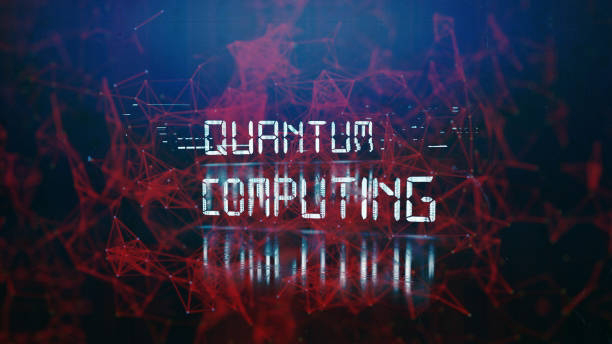Designing and building advanced quantum computers, as well as creating specialized libraries for them, is a complex and cutting-edge endeavor. Quantum computing is an emerging field with its own unique challenges and requirements, and it's distinct from classical computing. Here are some key points to consider:
1. **Quantum Computing Hardware**: Building quantum computers is highly specialized and requires expertise in quantum physics, quantum circuit design, and the development of quantum gates and qubits. You would need to collaborate with experts in this field to design and build the hardware.
2. **Quantum Software Development**: Quantum computing programming languages like Qiskit (for IBM Quantum) or Cirq (for Google Quantum) are used to develop quantum algorithms. You'll need to learn and use these languages to create software for your quantum computer.
3. **Quantum Libraries**: Building quantum libraries involves creating quantum algorithms and quantum gates that can be reused in different quantum programs. These libraries will be different from traditional data structure libraries and are highly specialized for quantum computing.
4. **Integration**: Integrating your quantum libraries into the quantum computer's software environment will depend on the platform or framework you're using. Most quantum computing platforms provide ways to include custom libraries or modules in your quantum programs.
5. **Distribution**: To make your libraries available for others to use, you might consider packaging them as open-source software and distributing them through platforms like GitHub or specialized quantum computing repositories. Users can then install and use your libraries as needed.
6. **Testing and Validation**: Quantum computing involves complex mathematical and quantum physics principles. Rigorous testing and validation of your hardware and software are essential to ensure the accuracy and reliability of your quantum computer.
7. **Quantum Error Correction**: Quantum computers are susceptible to errors due to factors like decoherence and noise. Implementing error correction codes is critical for practical quantum computing. You would need to work on error correction techniques and libraries as well.
8. **Scalability**: Consider the scalability of your quantum computer and software. As quantum computers increase in size and complexity, your design should accommodate growth and new technological developments.
9. **Interfacing with Classical Computers**: Quantum computers are often used in combination with classical computers. Developing interfaces and protocols for communication between quantum and classical components is crucial.
10. **Security**: Quantum computing also has implications for cryptography. Consider the security implications and applications of your quantum computer, as it can potentially break certain encryption methods.
To bind a library to a quantum computer, you will need to:
Make sure the library is compatible with the quantum computer's architecture and programming language.Write a compiler or transpiler to convert the library's code to the quantum computer's machine code.Install the compiled library on the quantum computer.
Compatibility
The first step is to make sure the library is compatible with the quantum computer's architecture and programming language. For example, a library written in Python will not be compatible with a quantum computer that only supports a quantum programming language like Qiskit or Cirq.
Compiler/Transpiler
Once you have confirmed that the library is compatible, you will need to write a compiler or transpiler to convert the library's code to the quantum computer's machine code. This is necessary because quantum computers use a different programming paradigm than traditional computers.
Installation
Once the library has been compiled, you can install it on the quantum computer. This process will vary depending on the specific quantum computer. For example, to install a library on a Rigetti Quantum Cloud quantum computer, you would use the Rigetti Python SDK.
Example
Here is an example of how to bind a library to a quantum computer:
"
# Import the necessary libraries import numpy as np import cirq
# Define a function to create a Bell state def create_bell_state():
# Create two qubits qubit_0 = cirq.LineQubit(0) qubit_1 = cirq.LineQubit(1) # Apply a Hadamard gate to qubit 0 circuit = cirq.Circuit() circuit.append(cirq.H(qubit_0)) # Apply a CNOT gate from qubit 0 to qubit 1 circuit.append(cirq.CNOT(qubit_0, qubit_1))
# Return the circuit return circuit
# Compile the circuit circuit = create_bell_state() compiled_circuit = cirq.optimize_for_target(circuit, cirq.google.Sycamore)
# Install the circuit on the quantum computer cirq.Simulator().run(compiled_circuit)
"
This example shows how to bind a library (in this case, the Cirq library) to a quantum computer to create a Bell state.
Data structures
To install a new version of a data structure in a quantum computer, you will need to follow the same steps as above. However, you will also need to make sure that the data structure is compatible with the quantum computer's architecture and programming language.
Conclusion
Binding a library to a quantum computer is a complex process, but it is necessary to use libraries on quantum computers. By following the steps above, you can bind libraries to quantum computers and import them into your programs.
Keep in mind that building quantum computers and software libraries is a highly specialized field and typically requires collaboration with experts and organizations dedicated to quantum technology. It's also important to stay updated with the latest developments in quantum computing, as the field is rapidly evolving.



















